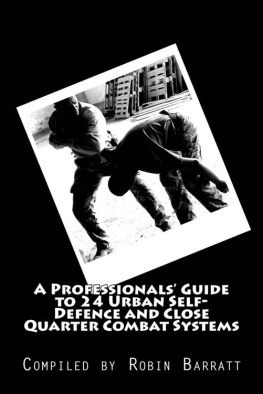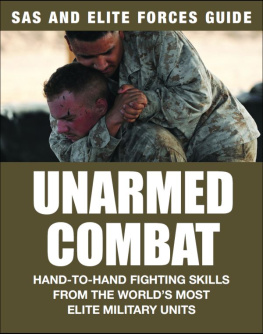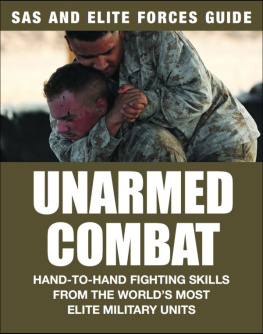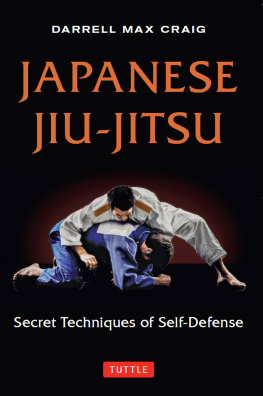Title Page
ALL-IN FIGHTING
by Captain W. E. Fairbairn
Late Assistant Commissioner
Shanghai Municipal Police
RIFLE SECTION
by Captain P. N. Walbridge
Diagrams by Hary
Copyright Page
Published by
The Naval & Military Press
in association with the Royal Armouries
Unit 10 Ridgewood Industrial Park
Uckfield, East Sussex, TN22 5QE
Tel: +44 (0) 1825 749494
Fax: +44 (0) 1825 765701
Digital version converted and published in 2012 by
Andrews UK Limited
www.andrewsuk.com
Military History at Your Fingertips
www.naval-military-press.com
Online Genealogy Research
www.military-genealogy.com
Online Military Cartography
www.militarymaproom.com

The Library & Archives Department at the Royal Armouries Museum, Leeds, specialises in the history and development of armour and weapons from earliest times to the present day. Material relating to the development of artillery and modern fortifications is held at the Royal Armouries Museum, Fort Nelson.
For further information contact:
Royal Armouries Museum, Library, Armouries Drive,
Leeds, West Yorkshire LS10 1LT
Royal Armouries, Library, Fort Nelson, Down End Road, Fareham PO17 6AN
Or visit the Museums website at
www.armouries.org.uk
In reprinting in facsimile from the original, any imperfections are inevitably reproduced and the quality may fall short of modern type and cartographic standards.
Preface
by Lieut.-Colonel J. P. OBrien Twohig
There seems little doubt that one of the causes of our failures during this war comes from the cricket (or baseball) mentality. It was the French equivalent of this which, in the case of the French nation when confronted with total war, caused it to close its eyes in horror and give up the struggle.
Unlike the war of 1914-1918 the proportion of individual fighting in this struggle is large, and it is not enough for front-line soldiers to be skilled in arms and determined; every soldier, sailor, airman, and in many cases every man and woman, may be called on to defend their lives in sudden emergencies. This defence can only be achieved by killing or disabling the enemy.
To conquer our ingrained repugnance to killing at close quarters is essential, and no better means of doing this has been discovered than by following the training methods given in Captain Fairbairns book.
To the civilian without a weapon or the soldier surprised without his or deprived of it, it gives the necessary confidence, determination and ruthlessness to gain victory.
It will soon be found that the principal value of the training lies not so much in the actual physical holds or breaks, but in the psychological reaction which engenders and fosters the necessary attitude of mind which refuses to admit defeat and is determined to achieve victory.
Introduction
This book is based upon earlier works issued under the titles of Dfendu , which was written for the police forces of the Far East, and Scientific Self-Defence , published by D. Appleton, of New York. Every method shown in these books has stood the criticism of police from practically every country in the world, including the Far East, which is the recognized home of jiu-jitsu (judo). A more expert community for criticizing works on self-defence it would be impossible to find.
The majority of the methods shown are drastic in the extreme. In contrast to judo, they recognize no accepted rules. They are not intended to provide amusement for all-in wrestling spectators, but for use in these dangerous times as part of the national preparedness against our enemies.
The question may well be asked, Why should I trouble to learn this rough-house method of fighting? We wish to make it clear that there is no intention of belittling boxing, wrestling, or rugby football. A knowledge of these is an asset to anyone intending to study all-in fighting, and those who already have it start off with a great advantage over those who have never taken part in these sports. No-one will dispute the effectiveness of a straight left or a right hook to the jaw or body, but unfortunately it takes months of practice to develop a good punch. Quite a number of persons, after long and intensive training, have given it up in despair. The edge of the hand blow and the chin jab, if applied as demonstrated in this manual, will quickly convince the student that in a matter of days he has developed a blow that is not only as effective as a good punch with the fist, but one which permits him to obtain a knock-out under conditions in which it would be almost impossible to punch effectively with the fist. Every method shown in this manual is practicable, and the majority of them have been successfully used in actual combat on many occasions during the past thirty years by the author or his students. They were specially selected to enable the young man of only average strength, and those past middle age, who have not led an active life, to overpower a much stronger opponent. In critical moments the trouble you have taken to master a few of them will more than repay you, and the knowledge that you can deal effectively with one or more opponents has its psychological value at all times.
Some readers may be appalled at the suggestion that it should be necessary for human beings of the twentieth century to revert to the grim brutality of the Stone Age in order to live. But it must be realized that, when dealing with an utterly ruthless enemy who has clearly expressed his intention of wiping this nation out of existence, there is no room for any scruple or compunction about the methods to be employed in preventing him. The reader is requested to imagine that he himself has been wantonly attacked by a thug who has put the heel of his hand under his nose and pushed hard. Let him be quite honest and realize what his feelings would be. His one, violent desire would be to do the thug the utmost damage - regardless of rules. In circumstances such as this he is forced back to quite primitive reactions, and it is the hope of the author that a study of this book will fit the ordinary man with the skill and the ability to deal automatically with such a situation.
There are very few men who would not fire back if they were attacked by a man with a gun, and they would have no regrets if their bullet found its mark. But suggest that they retaliate with a knife, or with any of the follow-up methods explained in this manual, and the majority would shrink from using such uncivilized or un-British methods. A gun is an impersonal weapon and kills cleanly and decently at a distance. Killing with the bare hands at close quarters savours too much of pure savagery for most people. They would hesitate to attempt it. But never was the catchword, He who hesitates is lost, more applicable. When it is a matter of life and death, not only of the individual but indeed of the nation, squeamish scruples are out of place. The sooner we realize that fact, the sooner we shall be fitted to face the grim and ruthless realities of total warfare.
In war, your attack can have only two possible objects: either to kill your opponent or to capture him alive. You must realize that he will be fighting for his life or to prevent capture, and that it will be a very difficult matter for you to apply a hold, etc., without first having made him receptive by striking him either with your hand, foot, or knee, etc., thus disabling him or rendering him semi-conscious, after which you will have no difficulty in disposing of him by one of the methods shown.
We do not advocate that students should attempt to master all the methods, but that they should select about ten, and specialize in thoroughly mastering them. Although we claim that every method is practicable, it is natural that individuals should find they can master one much more quickly than another. This is mainly on account of ones height, weight, build, or, in some cases, slight deformity, all of which will have to be taken into consideration before making the final selection.
Next page






